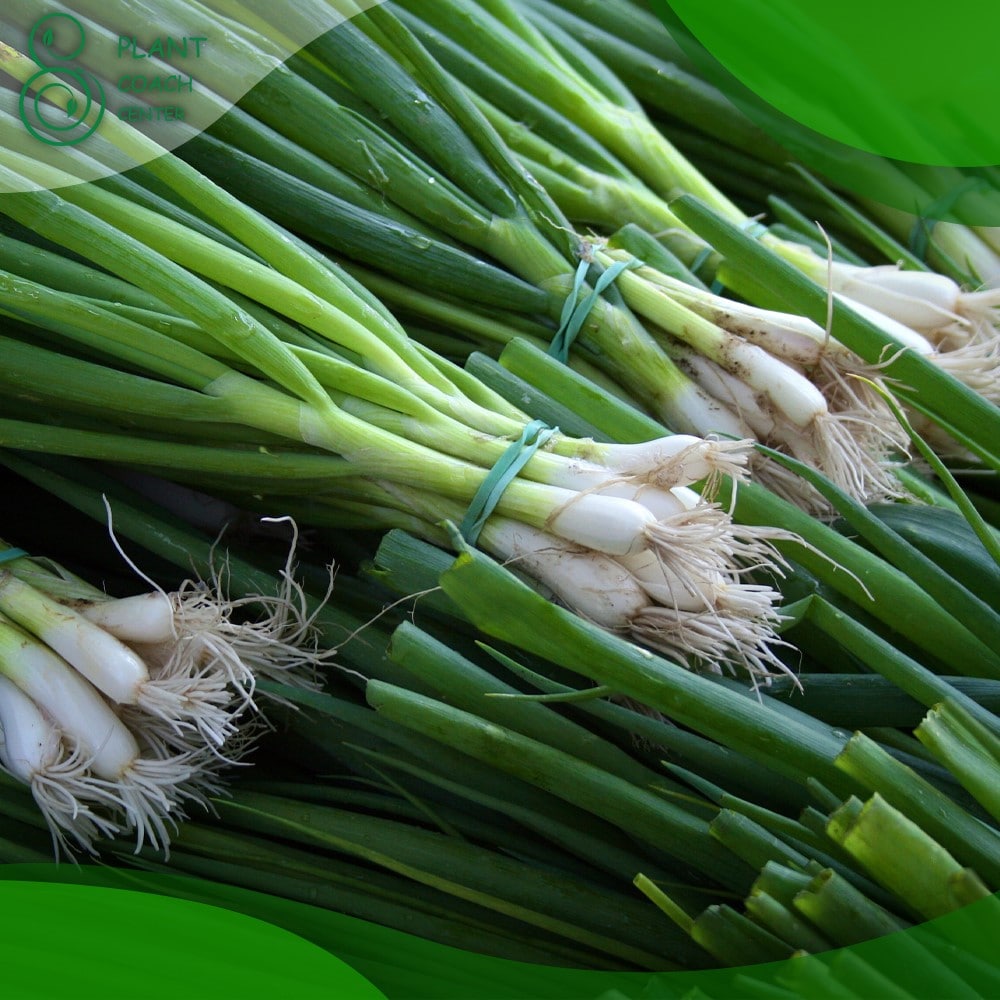When to Plant Green Onions
Welcome to the comprehensive guide on plant coaching and overcoming common plant problems. In this article, we will delve into the world of green onions, focusing on the optimal time to plant them. Whether you’re a gardening enthusiast or a beginner, this guide will equip you with the knowledge and skills to grow vibrant green onions in your garden. Please note that the content is related to plantcoachcenter.com, a go-to resource for plant enthusiasts.
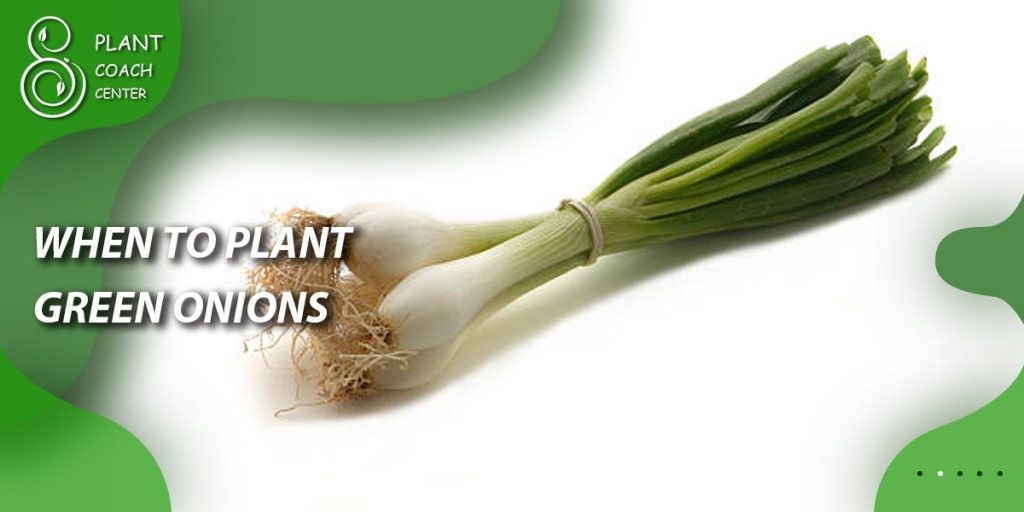
Understanding Green Onions:
- Introduction to Green Onions:
Green onions, also known as scallions, are versatile and flavorful vegetables widely used in various cuisines. They belong to the Allium genus and are characterized by their long, slender green leaves and white bulbous bases. Green onions offer a milder onion flavor compared to mature onions, making them a popular choice for garnishes, salads, stir-fries, and more.
- Varieties of Green Onions:
Green onions come in different varieties, each with its own unique characteristics. Here are some popular varieties you can consider for your garden:
– Evergreen White Bunching: This variety is known for its long, slender stalks and mild flavor. It is slow to form bulbs, making it ideal for continuous harvesting of green leaves.
– Tokyo Long White: As the name suggests, this variety produces long, white stalks with a mild taste. It is well-suited for both fresh consumption and cooking.
– Red Welsh: This variety stands out with its reddish-purple stalks and delicate onion flavor. It adds color and flavor to various dishes.
Remember to choose a variety that suits your taste preferences, climate, and growing conditions.
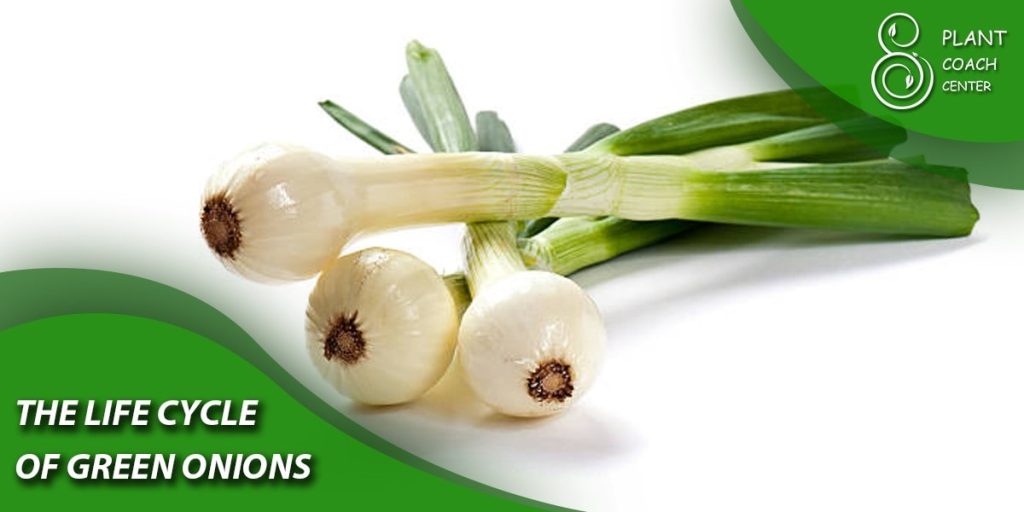
The Life Cycle of Green Onions:
- Seed Germination and Seedlings:
Green onions can be grown from seeds. Here’s a step-by-step guide to their seed germination and seedling stage:
- Seed Germination – Start by selecting high-quality green onion seeds from a reputable source. Sow the seeds in a well-draining seed-starting mix, covering them with a thin layer of soil. Keep the soil consistently moist and maintain a temperature between 60-75°F (15-24°C) for optimal germination. Germination typically occurs within 7-14 days.
- Caring for Seedlings – Once the seedlings emerge, provide them with ample light, preferably 12-16 hours a day. If growing indoors, use fluorescent lights or grow lights to ensure sufficient light intensity. Keep the seedlings well-watered and maintain a temperature between 55-75°F (13-24°C). Transplant the seedlings when they have developed a few sets of true leaves.
- Bulb Formation and Growth:
As green onions grow, they undergo stages of bulb formation and growth. Understanding these stages is crucial for successful cultivation:
– Bulb Initiation – Bulb initiation occurs when the green onion plants receive the appropriate temperature and daylight conditions. This triggers the development of the bulbous base.
– Bulb Expansion – During this stage, the green onion bulbs gradually enlarge as the plants store nutrients. Adequate spacing and nutrient availability are essential to support healthy bulb expansion.
– Leaf Growth – While the bulb expands, the green onion plants continue to produce long, green leaves. These leaves are harvested as scallions or left to mature into larger green onions with more developed bulbs.
Proper care and attention during each stage of growth are crucial for obtaining high-quality green onions.
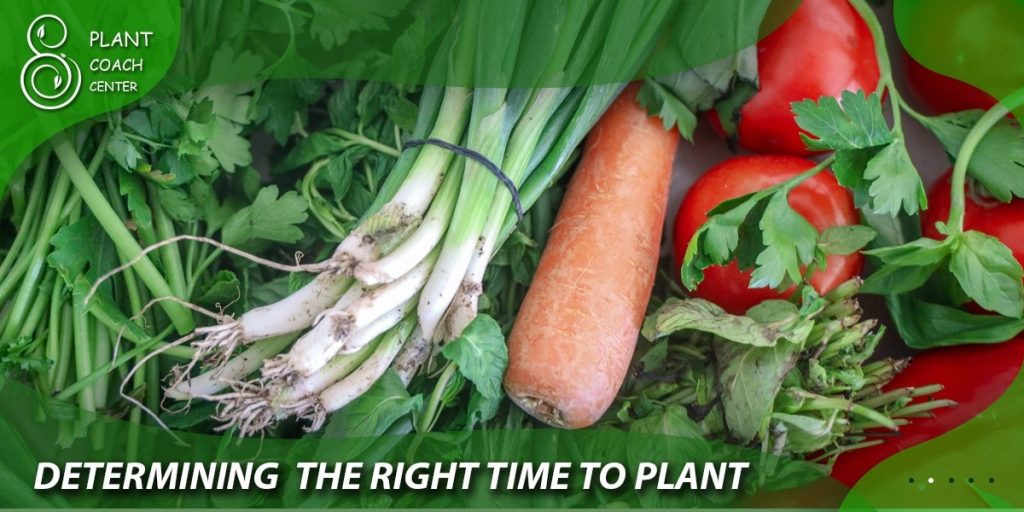
Determining the Ideal Planting Time for Green Onions:
- Green Onions and Seasonality:
Green onions have specific preferences regarding the time of year for planting. Consider the following seasonal factors when determining the ideal planting time:
– Temperature – Green onions thrive in cool to mild temperatures, generally between 50-85°F (10-29°C). Extreme heat or frost can negatively impact their growth.
– Daylight Hours – Green onions require adequate daylight to initiate bulb formation. The length of daylight differs throughout the year, so planting during the appropriate season ensures optimum growth.
- Considerations for Different Climates:
The ideal planting time for green onions can vary based on your climate. Consider the following guidelines:
– Temperate Climates – In temperate regions with distinct seasons, plant green onions in early spring or fall when the temperatures are cooler. This allows for optimal bulb development without exposure to extreme heat.
– Colder Climates – In colder regions, start green onions indoors during late winter or early spring. Transplant the seedlings outdoors when the soil temperature reaches around 40°F (4°C).
– Hotter Climates – In hot climates, it’s best to plant green onions during the cooler months to avoid the stress caused by high temperatures. Consider planting in late fall or winter for acontinuation:
better chance of success.
Preparing the Soil and Planting Site for Green Onions:
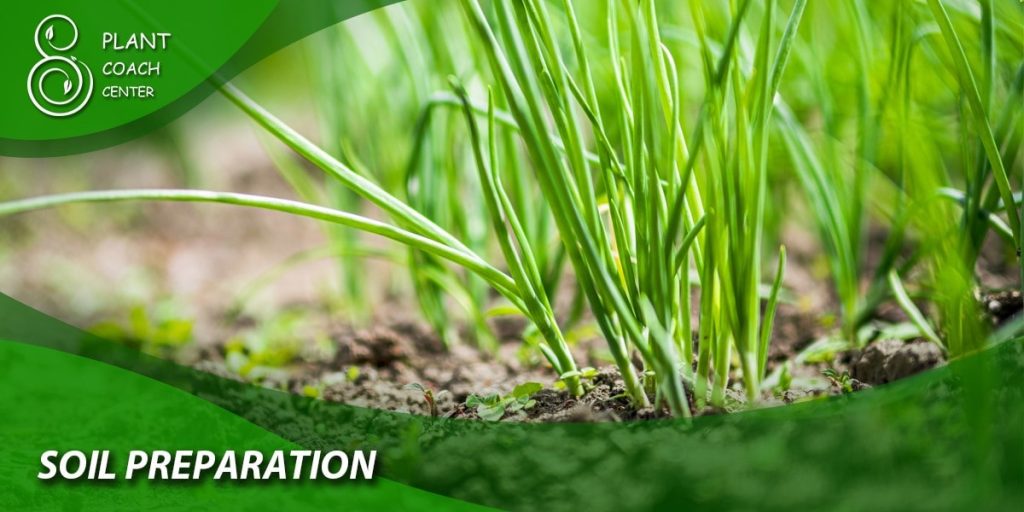
- Soil Requirements for Green Onions:
To ensure healthy growth and development of green onions, it’s important to prepare the soil properly. Consider the following soil requirements:
– Well-Draining Soil – Green onions prefer well-draining soil to prevent waterlogging, which can lead to root rot. Amend heavy clay soils with organic matter to improve drainage.
– pH Level – Green onions prefer slightly acidic to neutral soil, with a pH range between 6.0 and 7.0. Test your soil’s pH and adjust it if necessary using organic amendments or sulfur.
- Soil Preparation Techniques:
Follow these steps to prepare the soil for planting green onions:
- Clearing the Planting Area – Remove any existing weeds, rocks, or debris from the planting area. Green onions thrive best in weed-free environments.
- Amending the Soil – If your soil is heavy clay or lacks organic matter, incorporate well-rotted compost or aged manure into the top 6-8 inches (15-20 cm) of soil. This improves soil structure, drainage, and nutrient content.
- Raking and Leveling – Use a garden rake to break up any clumps and create a smooth, even surface for planting.
- Choosing the Right Planting Site:
Consider the following factors when selecting the planting site for green onions:
– Sunlight Exposure – Green onions require at least 6-8 hours of direct sunlight per day for optimal growth. Choose a location that receives ample sunlight.
– Shade Requirements – While green onions prefer full sun, they can tolerate partial shade. If your region experiences hot summers, providing them with some afternoon shade can prevent stress and bolting.
– Companion Planting – Green onions can benefit from companion plants that repel pests or provide shade. Consider planting them alongside carrots, lettuce, or herbs like basil and parsley.
– Crop Rotation – Avoid planting green onions in the same location where allium family plants, such as onions, garlic, or shallots, were grown in the previous year. This helps prevent the build-up of soil-borne diseases and pests specific to the allium family.
By selecting an appropriate planting site and preparing the soil accordingly, you create a favorable environment for green onion growth.
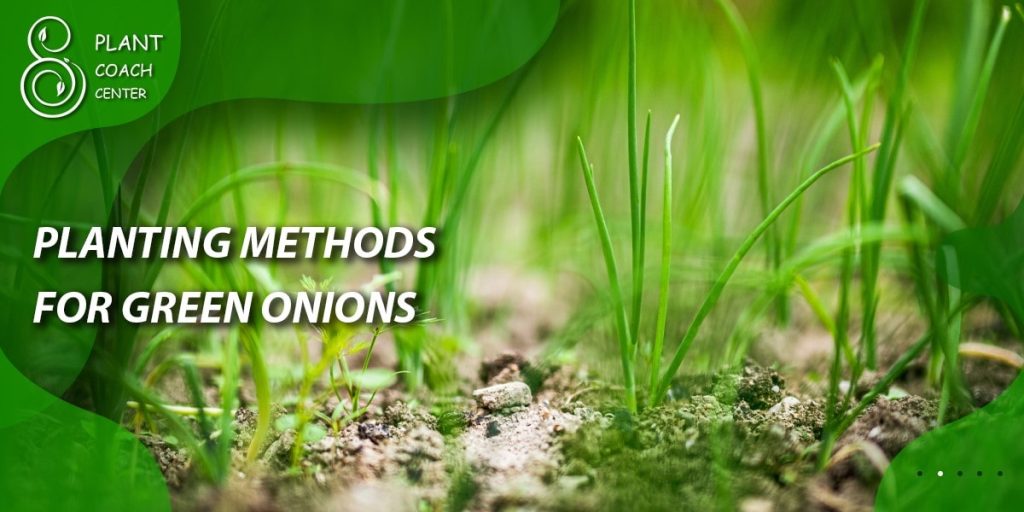
Planting Methods for Green Onions:
- Direct Seeding:
Direct seeding is a simple and common method for planting green onions. Follow these steps for successful direct seeding:
- Timing – In temperate climates, sow green onion seeds directly into the garden bed in early spring or fall. Ensure the soil temperature is at least 40°F (4°C) for proper germination.
- Spacing – Plant the seeds about 1 inch (2.5 cm) apart in rows, with rows spaced 12-18 inches (30-45 cm) apart. Maintain a consistent spacing to allow sufficient room for bulb development.
- Planting Depth – Sow the seeds at a depth of approximately 1/4 to 1/2 inch (0.6-1.3 cm). Lightly cover the seeds with soil and gently firm the soil surface.
- Watering – After sowing, water the bed gently to ensure the soil is evenly moist. Avoid overwatering, as it can lead to seed rot or fungal diseases.
- Thinning – Once the seedlings emerge and reach a height of 2-3 inches (5-7.5 cm), thin them to provide sufficient space for growth. Remove excess seedlings, leaving the strongest ones spaced approximately 2-3 inches (5-7.5 cm) apart.
- Transplanting Seedlings:
Transplanting seedlings offers more control over the growing environment and allows for an early start. Follow these steps for successful transplantation:
- Starting Seedlings Indoors – Start green onion seeds indoors 6-8 weeks before the last expected frost date in your area. Use seed trays or pots filled with seed-starting mix. Sow the seeds at a depth of 1/4 inch (0.6 cm) and keep them moist.
- Providing Optimal Conditions – Place the seed trays or pots in a warm location with temperatures between 60-75°F (15-24°C). Ensure the seedlings receive ample light, either from a sunny windowsill or by using fluorescent lights or grow lights.
- Hardening Off – About a week before transplanting, gradually expose the seedlings to outdoor conditions. Start by placing them in a sheltered area for a few hours a day, gradually increasing their exposure to direct sunlight and outdoor temperatures.
- Transplanting – When the soil is workable and the seedlings have developed a few sets of true leaves, it’s time to transplant them into the garden. Follow these steps:
– Preparation – Choose a cloudy day or transplant in the evening to minimize stress on the seedlings. Prepare the planting holes in the garden bed by digging small, shallow holes spaced approximately 2-3 inches (5-7.5 cm) apart in rows.
– Gentle Removal – Carefully remove the seedlings from their containers, avoiding damage to the roots. Gently loosen the root ball if it appears compacted.
– Planting Depth – Place each seedling in a planting hole, ensuring the base of the leaves is level with the soil surface. Backfill the hole with soil and lightly firm it around the seedling.
– Watering – After transplanting, water the seedlings thoroughly to settle the soil and provide moisture to the roots. Maintain regular watering to keep the soil consistently moist.
By following these planting methods, you can establish healthy green onion plants for a bountiful harvest.
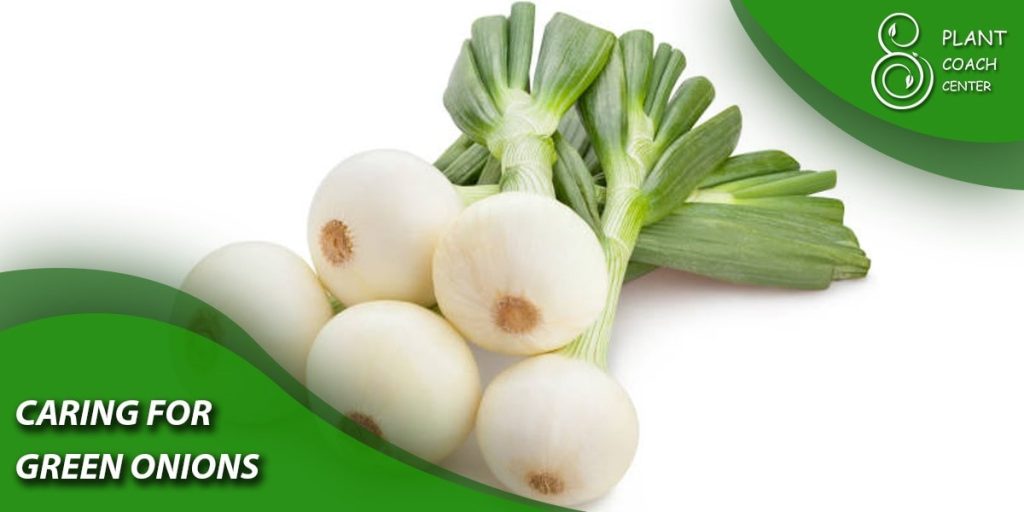
Caring for Green Onions:
- Watering:
Proper watering is essential for the growth and development of green onions. Here are some watering guidelines:
– Consistent Moisture – Green onions prefer evenly moist soil. Water them regularly, ensuring the soil doesn’t become waterlogged or excessively dry. Aim for about 1 inch (2.5 cm) of water per week, adjusting based on rainfall and temperature.
– Avoid Overwatering – Overwatering can lead to root rot and other diseases. Monitor the soil moisture level and adjust watering frequency accordingly. Allow the top inch (2.5 cm) of soil to dry out slightly between watering sessions.
– Mulching – Apply a layer of organic mulch, such as straw or shredded leaves, around the green onion plants. Mulching helps retain soil moisture, suppresses weed growth, and regulates soil temperature.
- Fertilizing:
Green onions benefit from regular fertilization to ensure healthy growth. Consider the following fertilizing tips:
– Balanced Fertilizer – Use a balanced fertilizer with equal parts nitrogen (N), phosphorus (P), and potassium (K) to provide essential nutrients. Apply a slow-release fertilizer or organic compost at the time of planting and again after about 4-6 weeks.
– Avoid Excessive Nitrogen – While nitrogen promotes leafy growth, excessive nitrogen can hinder bulb formation. Avoid high-nitrogen fertilizers or over-fertilizing with nitrogen-rich amendments.
– Foliar Feeding – Supplement regular fertilization with foliar feeding. Dilute a balanced liquid fertilizer and apply it to the leaves using a spray bottle. This provides a quick nutrient boost and enhances plant health.
- Weed Control:
Weed competition can hinder the growth of green onions and decrease yields. Employ the following weed control strategies:
– Regular Inspections – Conduct regular inspections of the planting area to identify and remove any emerging weeds promptly.
– Hand Pulling – For small weed infestations, hand pulling is an effective method. Ensure you remove the entire weed, including the roots, to prevent regrowth.
– Mulching – Apply a layer of organic mulch around the green onion plants to suppress weed growth. Mulching also helps conserve soil moisture and maintain even soil temperatures.
- Pest and Disease Management:
Green onions are relatively resistant to pests and diseases. However, certain issues may arise. Here are some common problems and their management:
– Pests – Common pests that can affect green onions include onion thrips, aphids, and onion maggots. Monitor the plants regularly and employ organic pest control methods, such as insecticidal soaps or neem oil, if necessary.
– Diseases – Green onions can be susceptible to fungal diseases like downy mildew and pink root. To minimize disease incidence, provide adequate spacing between plants, practice crop rotation, and avoid overhead watering. If needed, apply organic fungicides as directed.
– Companion Planting – Planting companion plants like marigolds or chives can help repel pests and reduce disease incidence.
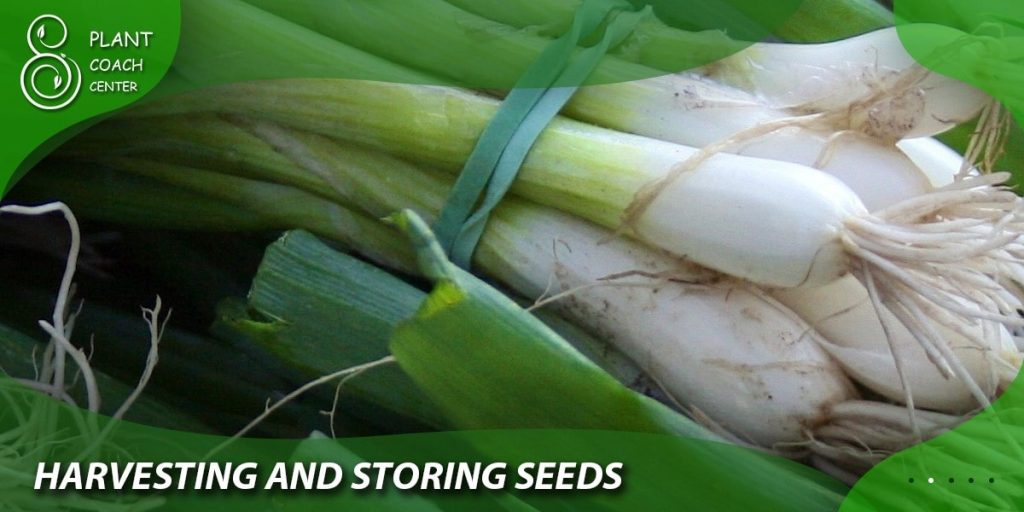
Harvesting and Storing Seeds:
If you wish to save seeds from your green onions for future plantings, follow these steps:
- Allow Flowering: Allow some of your green onion plants to bolt and produce flowers. This typically happens in the second year of growth.
- Pollination: Green onions are primarily self-pollinating, but insects can aid in cross-pollination. To prevent cross-pollination, consider isolating different onion varieties.
- Seed Development: After the flowers fade, small seed pods will form. Allow the seed pods to mature and turn brown or dry on the plant. This can take several weeks.
- Harvesting: Harvest the seed pods by cutting the stalks just below the pods. Place the seed heads in a paper bag or a container to collect any seeds that may fall out.
- Drying: To ensure proper seed storage, allow the seed heads to dry further in a well-ventilated area. This can take a few weeks. Once the seed heads are completely dry, gently crush them to release the seeds.
- Cleaning: Separate the seeds from the chaff by winnowing or using a fine-mesh sieve. Remove any remaining plant debris to obtain clean seeds.
- Storage: Store the seeds in a cool, dry place in airtight containers or small envelopes. Label the containers with the variety and date of collection for future reference.
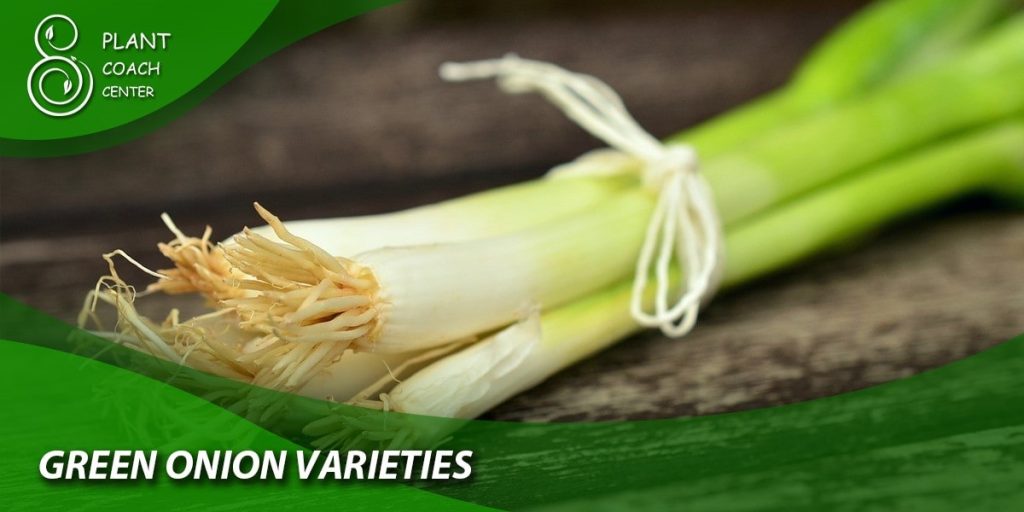
Green Onion Varieties:
Green onions come in various shapes, sizes, and flavors. Here are a few popular varieties you can consider for your garden:
- Evergreen Hardy White: This variety is known for its hardiness and ability to withstand cold temperatures. It produces thick, white stems and has a mild onion flavor.
- Red Baron: Red Baron features striking red stems and a mild to medium onion flavor. It adds vibrant color to dishes and salads.
- Ishikura Long Winter: This variety is excellent for overwintering in milder climates. It produces long, slender green leaves and has a mild flavor.
- White Lisbon: White Lisbon is a classic green onion variety with slender white stems and a mild, delicate taste. It is quick to mature and suitable for succession planting.
- Bunching Onions: Bunching onions, also known as scallions, are non-bulbing varieties that form clusters of stems without developing a defined bulb. They are often used for their green leaves and mild flavor.
Conclusion
growing green onions can be a fulfilling and rewarding experience. Whether you have a spacious garden or limited space for containers, these versatile and flavorful vegetables can be cultivated with relative ease. By following the tips and considerations provided, you can increase your chances of success and enjoy a bountiful harvest of fresh green onions.
From selecting the right variety and preparing the soil to planting, watering, and providing proper care, each step plays a vital role in the growth and development of your green onions. Remember to monitor soil moisture, weed diligently, and protect your plants from pests and diseases.
When should I plant green onions?
Spring or early fall.
Can I plant green onions in summer?
Yes, but it's best to avoid extreme heat.
Is it better to plant green onions indoors or outdoors?
Outdoors, in well-drained soil.
How long does it take for green onions to grow?
Around 8 to 12 weeks.


